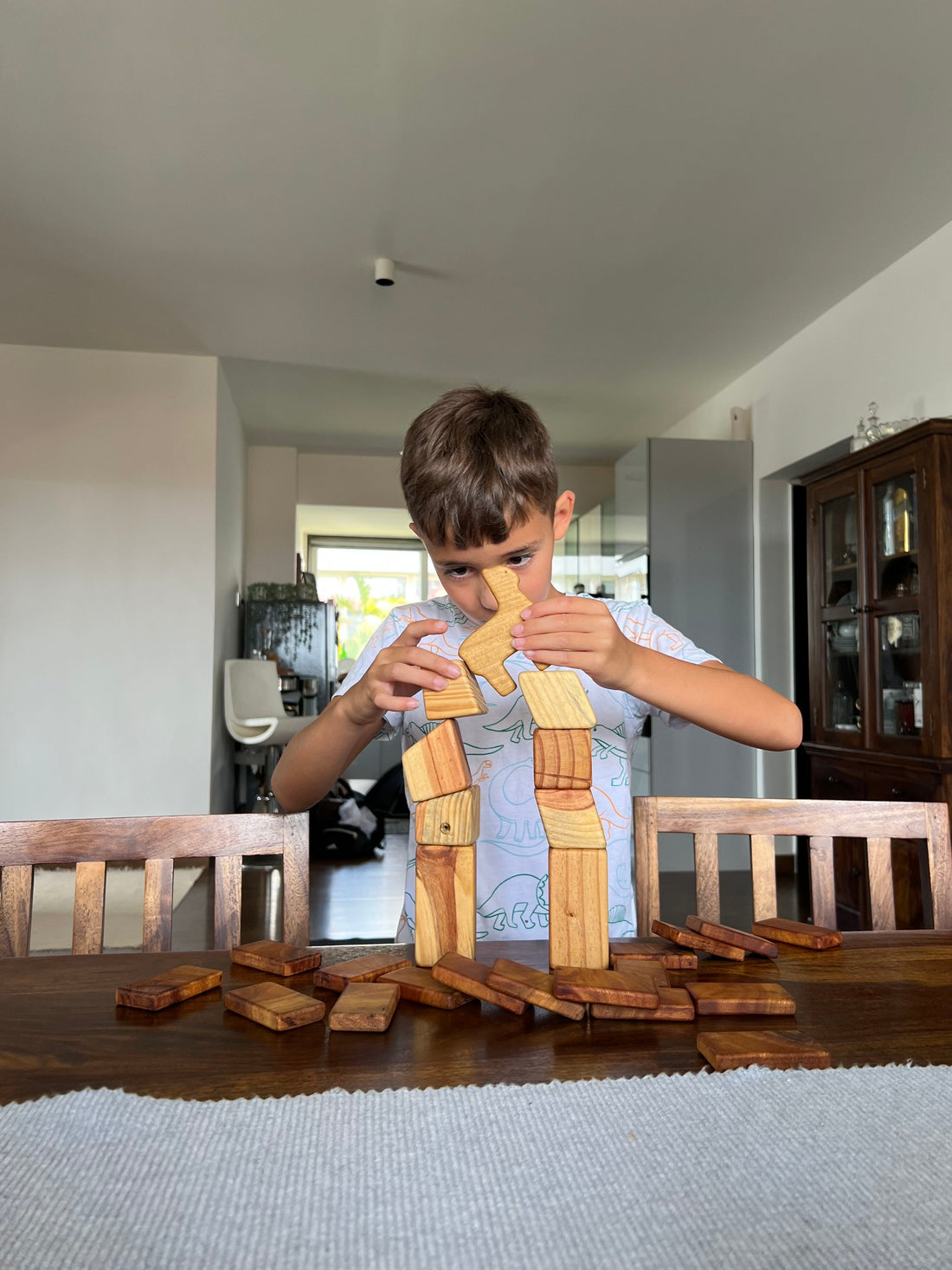The Balance of Play
In today's rapidly advancing technological era, parents and educators constantly grapple with the decision of wooden vs. electronic toys for children. Both types of toys, undeniably, have their advantages and drawbacks. However, in a world saturated with screens, it's crucial to understand the benefits of each to foster healthy, balanced play.
The Allure of Wooden Toys
1. Timeless Appeal
Historically, wooden toys have been around for centuries. Because of their enduring charm, these toys have continued to be beloved by children of all generations. Unlike their digital counterparts, wooden toys often encourage open-ended play, allowing children to use their imagination freely.
2. Developmental Advantages
While electronic toys can be flashy and engaging, wooden toys often offer a different set of developmental benefits. For instance, wooden blocks or puzzles can help children develop fine motor skills and spatial awareness. Moreover, such toys encourage problem-solving, patience, and concentration.
3. Environmental Footprint
Given the concerns about electronic waste and environmental sustainability, wooden toys clearly offer a more eco-friendly alternative. Typically, wooden toys are durable, long-lasting, and biodegradable, making them a more sustainable choice.
Embracing the Digital: Electronic Toys
1. Educational Potential
Contrarily, electronic toys are not without their merits. With the right guidance, they can be powerful educational tools. For instance, many apps and electronic games are designed to teach children math, language, and other crucial skills. Thus, when used judiciously, they can complement traditional learning methods.
2. Enhancing Tech-Savviness
In a world that's becoming increasingly digital, it's essential for children to be familiar with technology. Consequently, electronic toys can provide an early introduction, making kids more comfortable with tech tools they'll inevitably use in the future.
3. Interactive Engagement
Interactive electronic toys can respond to a child's actions, providing immediate feedback. This interaction can be motivating and can promote engagement, potentially making the learning process more effective.
Striking a Balance: Integrating Both Worlds
1. Time Management
First and foremost, it's crucial to set boundaries. Even though electronic toys can be educational and engaging, they should not dominate a child's playtime. Instead, children should also have ample time with non-digital toys, ensuring a diverse play experience.
2. Supervised Play
Whether with wooden or electronic toys, supervision is key. Parents should be actively involved in their children's play, guiding them and ensuring they're deriving maximum benefit from their toys. This also provides an opportunity for bonding and shared experiences.
3. Quality Over Quantity
Lastly, it's not just about the type of toy, but its quality. Instead of amassing a multitude of toys, focus on select, high-quality toys that align with your child's interests and developmental needs. A few well-chosen toys can provide endless hours of imaginative and educational play.
Embracing a Holistic Approach
In conclusion, while the debate between wooden and electronic toys will continue, what's clear is that both can have a place in a child's life. By integrating the traditional charm of wooden toys with the educational potential of electronic ones, we can provide a balanced, enriching play environment. After all, in fostering healthy play, it's not about choosing one over the other, but harnessing the best of both worlds.
